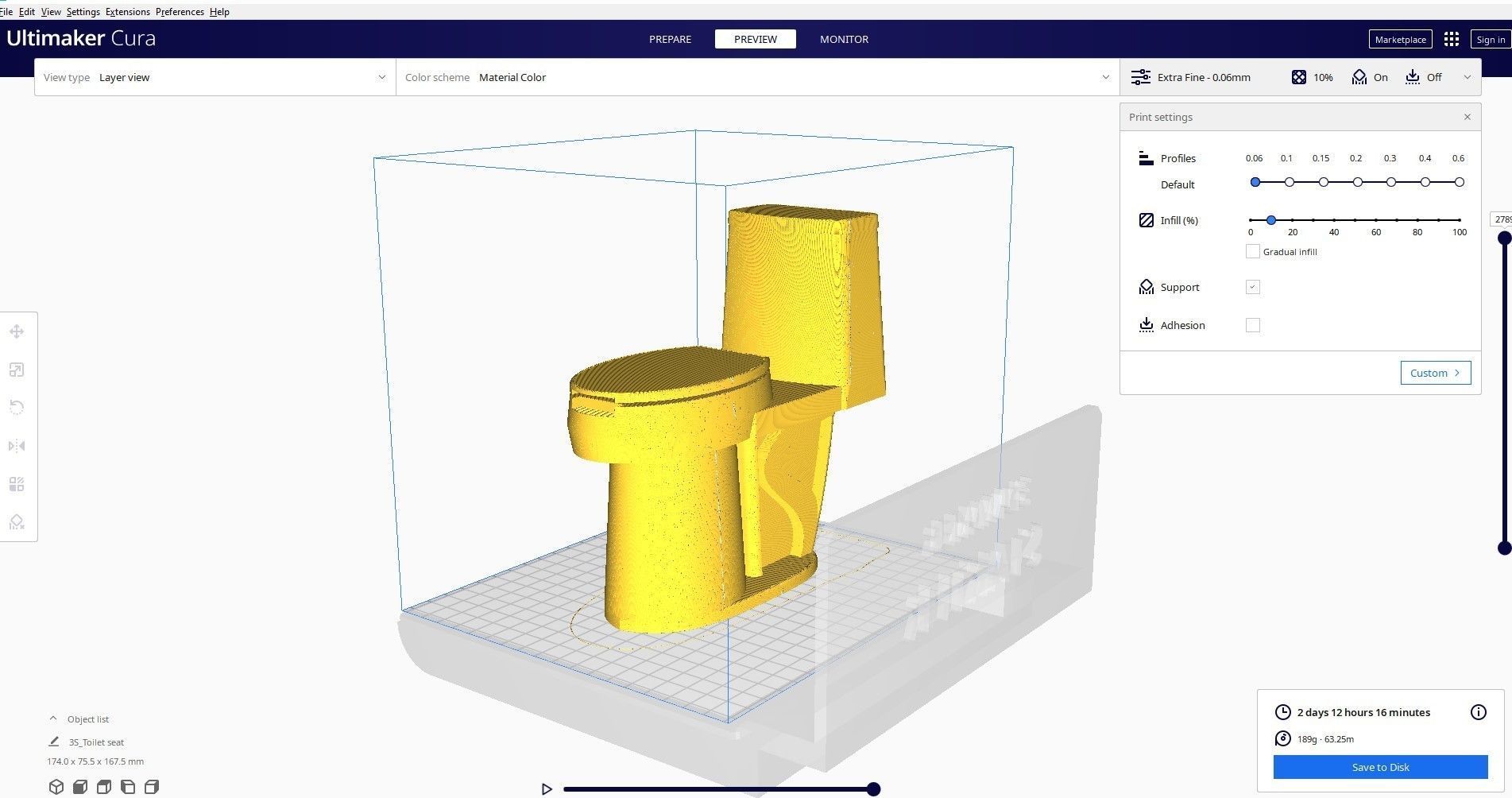
Toilet seat 3d printed 3D print model
A toilet seat is a hinged unit consisting of a round or oval open seat, and usually a lid, which is bolted onto the bowl of a toilet used in a sitting position (as opposed to a squat toilet). The seat can be either for a flush toilet or a dry toilet. A toilet seat consists of the seat itself, which may be contoured for the user to sit on, and the lid, which covers the toilet when it is not in use – the lid may be absent in some cases, particularly in public restroomsToilet seats often have a lid. This lid is frequently left open. The combined toilet seat and lid may be kept in a closed position when a toilet is not in use, making it so—at a minimum—the lid must be raised prior to use. It can be closed to prevent small items from falling in, to reduce odors, for aesthetic purposes or to provide a chair in the toilet room. Some studies show that closing the lid prevents the spread of aerosols on flushing (toilet plume) which might be a source of disease transmission.[1]
Depending on the sex of the user and type of use (urination or defecation) the seat itself may be left either up or down. The issue of whether the seat and lid should be placed in the closed position after use is a perennial topic of discussion and light humor (usually across gender lines), with it often being argued that leaving the toilet seat up is more efficient for men, while putting it down is more considerate for women. The right answer seems to depend on factors ranging from the location of the toilet (public or private), the population of the users (e.g. a sorority house vs frat house) and/or personal or family values, opinions, preferences, agreements or toiletry habits.[2][3]
Toilet seats often rest not directly on the porcelain or metal body of the toilet itself but upon the hinges and upon tabs/spacers affixed at a few spots. Similarly, lids do not rest directly in uniform contact with the seat but are elevated above it by the hinges and tabs/spacers affixed at a few spots. This is a possible area where effluent aerosols can be spread when shut.










